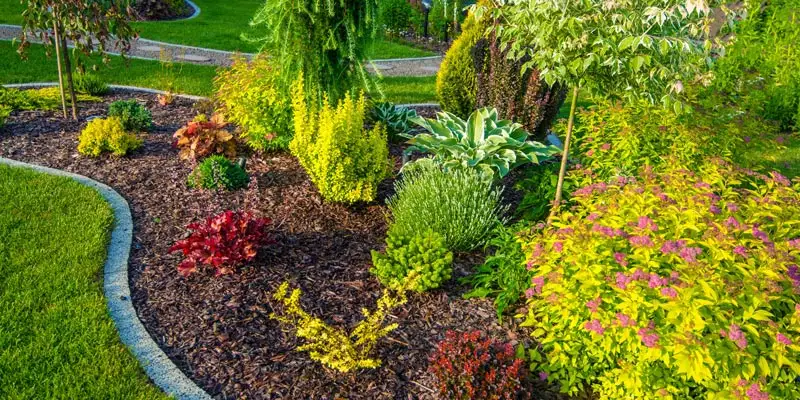The Best Strategy To Use For Landscape Design
Table of ContentsThe smart Trick of Landscape Design That Nobody is DiscussingThe Main Principles Of Landscape Design See This Report on Landscape DesignFacts About Landscape Design Uncovered
A lawn can generally be divided into three areas: public (the front backyard), exclusive (the back lawn), and service (generally the side lawn). The place of task locations depends largely on the type of location, the dimension of room needed, the type of task, and the desired distance to various other activities and structures.
The outdoors wall surface of your home often works as the initial wall or starting point of an outside room. Inappropriate usages should be separated, and related tasks, such as cooking and eating, should be assembled to make the lawn extra effective and pleasurable. When making use of hardscape to develop areas, utilize building and construction material similar to that used in your house for continuity from your house right into the garden.
Connected rooms. Credit History: Gail Hansen, UF/IFAS Making use of comparable hardscape functions and repeating plants draws the eye around the garden. Crucial points in the process can be highlighted with plantings or functions that draw attention and encourage motion in a certain direction. Relocating along the path takes a person from one location to the following and enables the individual to have a selection of experiences.
From a design point of view, plant materials have three major functions in the landscape: aesthetic, structural and practical. Aesthetically, plants produce a visually positive setting and structurally plants arrange and specify spaces.
Landscape Design - Truths
For psychological comfort plants are utilized as physical or implied barriers for privacy and safety and security. Physical barriers block both the view and accessibility to a space and include fencings, wall surfaces and plant hedges.
Physical and indicated obstacles. Credit Report: Gail Hansen, UF/IFAS For these reasons, the sorts of plants to be utilized (such as trees, hedges, or groundcovers) should be selected in the beginning of preparation. Plant types are selected for their useful capabilities to make sure that their future function and required space can be taken into consideration at the same time.
The above airplane, the upright airplane and the ground airplane need to all be considered to produce unit. Once the shape of a plant bed has actually try these out been established, the plants should be massed (grouped) and layered to attain aesthetic unity and the wanted quantity of enclosure. The dimension of a plant mass will certainly rely on the overall size of the lawn, the size of the specific plants in the mass, and the focus or influence preferred from the plant material.
Each plant mass is in front of, behind, or next to, an additional mass. Credit Click Here History: Gail Hansen, UF/IFAS Duplicating plants within a mass and duplicating masses with similar plants links the garden together. The specific plant attributes have to be thought about to effectively layer and mass plants.
Things about Landscape Design
All plant structures start with the major framework plants, the huge, primarily evergreen background plants-such as the trees and huge shrubs. These plants different or enframe spaces, manage the dimension of the area, and give the beginning point for choosing the appropriate characteristics of the second layer, midground plants, for massing and infill.
Important factors in the garden need to be highlighted by the usage of special plants, unique frameworks, or yard accessories. Marking thresholds or entrances to spaces can be done with gates, arbors, and steps, or through using one-of-a-kind and vivid plants. The form and/or design theme of the yard will frequently help identify the crucial factors and just how they should be highlighted.
Other important areas in the yard are centerpieces, which is used to visually arrange a designed location. The kind of focal point commonly depends on the checking out viewpoint. Different perspectives or point of views can disclose different compositions in the landscape that may require a variety of focal factors. Contrasting appearance, shape, dimension and shade will catch and hold the eye.
Not known Details About Landscape Design
Number 13. Plant kinds. Credit Score: Gail Hansen, UF/IFAS After kind, texture is the following dominant attribute of a plant; coarse, tool and fine textures can be utilized for contrast and focus in find out this here the landscape. Form and texture both trump shade in the yard for the majority of the year. During certain periods, color will be the most obvious quality of the garden.


The enjoyable scent of plants, the audio of wind in the trees, the noise and appearance of water, and the shades and appearances of sculptures, pots and garden furniture all contribute to the experience of the yard. One detail that is often forgotten is the result of light on the visual appeals of the plants.
The entire yard modifications in feature and appearance over the training course of the day, and the training course of a year, as the light and temperature change from morning to night and period to period. Plant choice should take into consideration a plant's development rate, its fully grown dimension and type, and the upkeep it will require.
It is crucial to recognize the ultimate fully grown size of plants so they can be positioned in the right location and spaced properly when they are mounted. Giving plants space to expand is a challenge because the common mature dimension is typically based upon ideal expanding conditions and the ecological problems of a site may cause a plant to grow bigger or remain smaller sized.